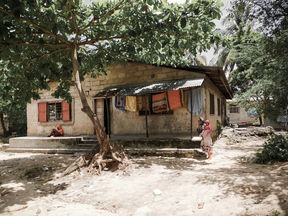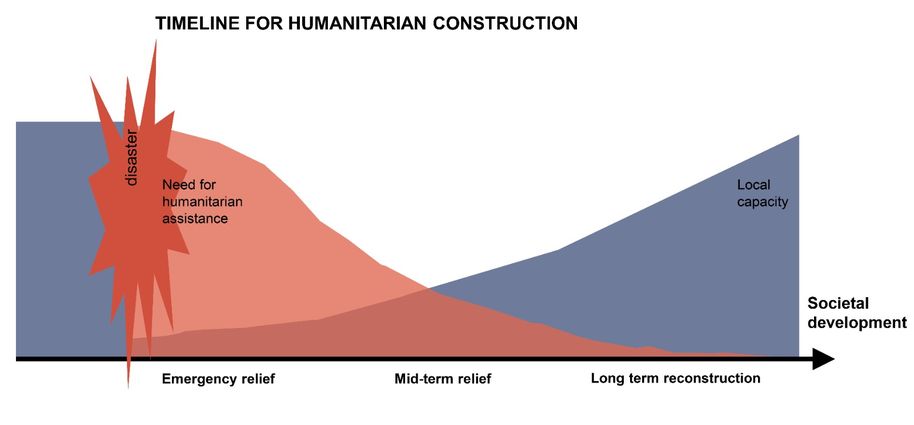Humanitarian architecture – what does it mean?

Due to climate change, conflicts and natural cataclysms, the world is witnessing a record number of refugees and forced migration. In such extreme situations, the security, livelihoods, dignity and autonomy of the people involved are severely endangered.
Humanitarian crises call for action, and architecture is a crucial component in the process of helping and rebuilding capacities of the people in need. Consequently, the term ‘humanitarian architecture’ has emerged in the architectural discourse in recent decades, to the extent that it can hardly be avoided. In this blog, I will discuss the basic definitions and functions of humanitarian architecture.
Temporal modes of humanitarian relief
The term ‘humanitarian architecture’ is most often used for short-term emergency situations where local capacity to respond is overwhelmed, and external humanitarian assistance is called for. In case of a natural cataclysm, (or a disaster when seen from the human perspective) local capacity suddenly collapses, and the need for humanitarian assistance is high. Over time, as the local capacity starts to increase, the need for humanitarian aid consequently diminishes. The desired condition and direction is societal development, in which the local community becomes independent and external aid is no longer needed.
In humanitarian sector, we can identify roughly three temporal modes that distinguish themselves in urgency, yet overlap in crucial ways:
- Emergency relief is the immediate response to life-threatening conditions. It requires urgent actions: emergency shelters ensure protection from weather, prevent further deaths and secure the survival of the victims.
- The mid-term relief includes the transitional shelter, which offers standard solutions to housing needs, while still not being an ideal solution.
- Reconstruction is when the permanent habitat and infrastructure are set in place.
Too often, however, the transitional becomes permanent, and what was built without planning or design, remains in use even for decades. The design and management of refugee camps is thus becoming ever more timely, as more and more of those initially temporary habitats are turning into permanent cities.
Humanitarian architecture presents a holistic approach to design practices in precarious contexts, considering empathic and participatory planning methodologies.

Humanitarian architecture as poverty reduction
In addition to emergency relief, humanitarian architecture can also be understood as long term recovery and poverty alleviation, participatory planning and as community engagement in vulnerable communities. It can also refer to culturally appropriate and locally adapted architectural design solutions in low resource settings.
Be that an emergency or long-term development, what is common to all cases, is that the project or activity labelled humanitarian architecture
- aims at the betterment of living conditions of vulnerable communities, who, for themselves
- cannot afford to pay for the services of an architect
- are not in a position to voice their needs in their society
- is designed in collaboration with those communities, engaging and enabling the members to take ownership of the project
- uses local resources, materials, manpower, to boost local economy
- exploits those building techniques that are adapted to local climatic conditions
- benefits from other disciplines in the design and implementation
- concentrates on processes rather than products.
Invitation to act
Humanitarian architecture engages in designing and planning of human settlements in vulnerable conditions, ranging from short term emergency situations to long term poverty alleviation. It engages with the primary needs of humans in precarious situations, concentrating on processes rather than products.
It helps to ask, how architects can learn to become useful actors in varied cultural environments with an understanding of their specific socio-political and economic realities, to make informed decisions and enable local capacities to grow.
Our WiT Programme offers a platform to discuss and experience some of the realities of humanitarian architecture.






